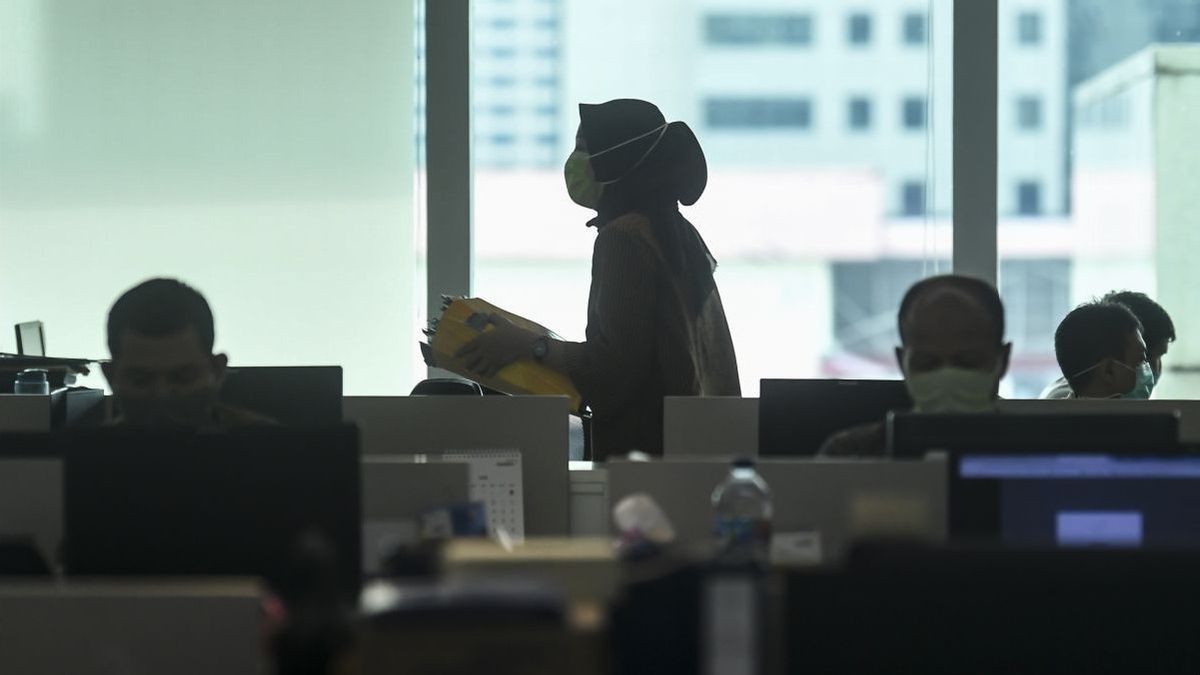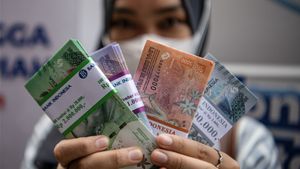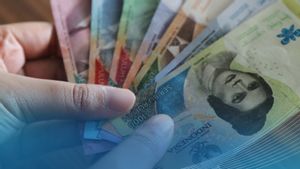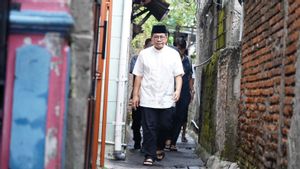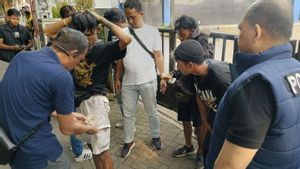JAKARTA - Indonesia is currently at an important crossroads in its economic journey.
The middle class, which has been one of the main motors for economic growth, is now facing serious challenges.
In recent decades, the middle class in Indonesia has experienced rapid development.
According to the World Bank (2020), the middle class in Indonesia is the fastest growing population segment, with a rate of 10 percent per year.
The total population of this middle class is even estimated to reach around 70 percent of Indonesia's total population by 2045.
However, in the last five years, the number of middle class residents has actually decreased.
BPS data shows a decrease in the number of middle class by 4.32 percentage points, from 21.45 percent in 2019 to 17.13 percent in 2024.
This is a signal that should not be ignored, especially when financial inclusion in Indonesia, which according to the 2023 Inclusive National Financial Strategy (SNKI) report, continues to increase from year to year, to reach 88.7 percent in 2023.
This figure means that eight out of ten Indonesians, including the middle class, have access to formal financial services, such as bank accounts, credit, insurance, and other financial products.
This proportion shows that most people have taken advantage of financial products and services provided by formal financial institutions.
On the other hand, financial inclusion has become a global agenda. Governments in various countries continue to strive to increase financial inclusion to empower the community, support poverty alleviation, reduce inequality, and maintain financial system stability.
Financial inclusion is considered the main driver to reduce extreme poverty and improve mutual welfare. In fact, financial inclusion has been identified as a driver for seven of the 17 Sustainable Development Goals (SDGs). In addition, the G20 is also committed to advancing financial inclusion around the world.
However, financial inclusion is not limited to physical access, but also about the active use of available financial services, such as storing money in banks, using digital wallets, or utilizing credit.
According to Bank Indonesia (2020), financial inclusion can be a solution to improve people's welfare and encourage sustainable economic growth.
Access to useful and affordable financial products and services allows people to manage risks, level consumption, build assets, and invest in education and health.
All of this ultimately contributes to an increase in income and economic well-being as a whole.
With a high level of financial inclusion, it is hoped that the community will be able to manage finances better, plan the future, and improve their economic welfare.
Then, why are the middle class actually trapped in economic stagnation? Although financial inclusion continues to increase, many regions in Indonesia, especially middle class residents outside Java, still face challenges in accessing financial services.
Data on Village Potential 2021 shows that the distribution of bank and ATM agents is still very limited in a number of areas, such as Kalimantan, Maluku, and Papua.
Without equal access, it is difficult for the middle class in these areas to take full advantage of the potential for financial inclusion.
In addition to limited access, the level of financial inclusion among the middle class is also uneven.
Based on the SNKI Implementation Report in 2021, although the ownership of accounts and the use of formal financial products/services in the upper middle- and upper-income community group is quite high, with 71 percent having accounts and 86.3 percent using formal financial products/services, their access to several banking and non-bank products is still low.
The use of products and services, such as loans, internet or "mobile banking", and electronic money, is still below 50 percent, and for some non-bank products, such as the purchase of bonds, stocks, and mutual funds, the use is still below 10 percent.
This decline in the number of middle classes is an encouragement for the government to continue to increase financial inclusion. Concrete steps are needed so that we can face this situation. Thus, Indonesia can immediately get out of the "middle-income trap" trap. To avoid this, there are several steps that need to be taken.
First, financial literacy must be improved. Financial literacy must be a priority in financial inclusion strategies. People, especially the middle class, need to be equipped with sufficient knowledge of financial products, including investment, so that they can make use of them optimally.
Second, the government needs to improve financial infrastructure in disadvantaged areas. Without equal access, financial inclusion will only be a number, without a real impact on people's welfare.
Third, pro-investment policies need to be strengthened. The government together with the Deposit Insurance Corporation (LPS) need to design policies that encourage people to invest more, for example through tax incentives for households who invest or financial literacy programs that focus on long-term benefits from investment.
Fourth, education must also be a top priority. Currently, 37.75 percent of the middle class population still have equivalent or lower junior high school education.
In fact, education is a significant variable in improving welfare.
Research shows an additional one year of education can reduce the risk of poverty and social exclusion by about 29 percent.
Financial inclusion is not just about granting access to bank accounts. It's about creating real opportunities for every middle-class household to thrive, improve welfare, and transcend their economic boundaries.
With access to investment, adequate financial literacy, and better education, the middle class has a great opportunity to move up to the top class.
If Indonesia wants to prevent middle class traps and ensure inclusive economic growth, a more progressive financial inclusion policy must be implemented immediately.
This is the time for Indonesia to move from words to real action, to ensure that the middle class is no longer trapped in a stagnation ravine.
The government and all stakeholders must unite to create an inclusive, sustainable, and able to encourage social mobility for all.
The English, Chinese, Japanese, Arabic, and French versions are automatically generated by the AI. So there may still be inaccuracies in translating, please always see Indonesian as our main language. (system supported by DigitalSiber.id)
